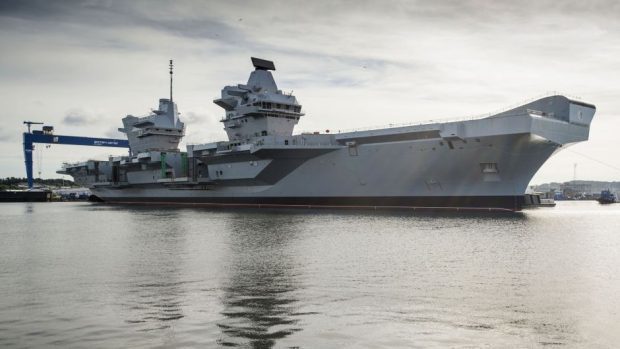The new HMS Queen Elizabeth aircraft carrier has been hit with propeller problems and is undergoing further safety checks while anchored at Invergordon.
The 65,000-tonne warship, the largest ever built by the Royal Navy, is being put through sea trials after leaving Rosyth dockyard in Fife two weeks ago.
But debris became caught around one of its propeller shafts. Although the problem later cleared itself, the shaft needed to be examined by divers.
Checks are ongoing on the £3billion vessel while it docks at the Easter Ross port for a pre-planned stopover.
A spokeswoman for the Aircraft Carrier Alliance stressed that the checks were precautionary, adding: “HMS Queen Elizabeth is making progress through her sea trials programme, which is designed to test the full spectrum of her systems.
“The ship is performing well, however an item of debris was caught around one of the propeller shafts. This was subsequently cleared and an investigation has been undertaken.
“The ship is currently in Invergordon for one of her planned stops during the trials programme, to store and re-fuel the ship. As a precautionary measure, we will use this opportunity to complete further thorough checks and ensure sea trials continue safely.”
The debris issue was identified last week before it entered the Cromarty Firth and precautionary measures were taken immediately.
The arrival of HMS Queen Elizabeth over the weekend has drawn large crowds to the Highland port.
However, various temporary road restrictions are in place along the shores of the Cromarty Firth on the instructions of Police Scotland for road safety reasons.
These include a 30mph speed limit and no stopping along stretches of the B9163 Cromarty to Culbokie road.
Unclassified roads and tracks leading to potential viewpoints to the carrier have also been closed.
HMS Queen Elizabeth – one of two new carriers being built at Rosyth dockyard in Fife at a cost of more than £6bn – began sea trials last month.
After about six weeks of sea trials in the North Sea, the plan is for the carrier to return to Rosyth for adjustments before sailing later this year to its home port, Portsmouth.
The first of the planes is planned to arrive next year and the carrier is scheduled to be operational in 2020, bound for anywhere from the Persian Gulf to the South China Sea.
